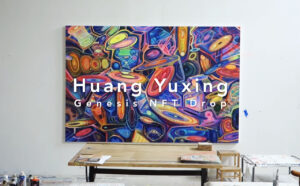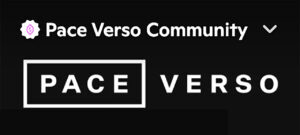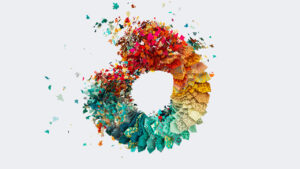With its gated access and user base numbering more than 300 million, Discord has quickly become a go-to online platform for NFT projects hoping to build communities. While Twitter remains a vital news source, members-only platforms may offer better opportunities for networking and engagement. For this reason, companies serious about entering Web3 have found it critical to establish a presence on what Vogue Business has dubbed “Soho House of Web 3.0.”
“It was essential to maintain an influential presence there since Discord prioritizes community,” says Geo Merchant, Curatorial and Content Manager at LiveArt, who further emphasizes the popularity of Discord among blockchain enthusiasts. The Web3 platform, which is hoping to bridge the gap between digital and fine art collectors, currently maintains a Discord community of users mostly based in Asia-Pacific, with primary discussion topics centered on LiveArt’s latest drops and developments.

LiveArt has used its Discord server to announce its latest drops and developments, including the pre-sale of Huang Yuxing’s Genesis release on September 23. Image: @liveart.io on Instagram
By allowing for immediate two-way communication, reflects Merchant, LiveArt’s Discord moderators can more swiftly gather and act on user feedback. “We have multiple channels on Discord where community members can provide feedback or input and where that feedback can get upvoted,” she says. “We then forward the most highly requested features to the team.” In addition to facilitating conversations, LiveArt’s Discord also hosts events like Artist Talks and contests, the latter of which LiveArt highlights as a best practice.

Pace Verso’s Discord serves as an extension of the Pace Gallery brand. Image: Pace Verso on Discord
Additionally, a Discord server represents a further opportunity to define or enhance a particular brand. For example, Pace Verso, the dedicated NFT marketplace from Pace Gallery, has used Discord to capture the Pace offering. “We don’t shill on our Discord because that’s not the Pace brand as a blue-chip player,” says Ariel Hudes, Principal of Pace Ventures. “We’re trying to be in the space, but we don’t focus on giveaways, freebies, and contests.”
The point is not “building hype,” Hudes says. Instead, she adds, “We try to build visibility and context around the projects we’re doing. So you’re not going to see us pushing sales, talking about prices, and flipping. Rather, we’re going to be talking about artists’ histories, careers, future projects, and historical movements that might be referenced.”

According to Pace’s Ariel Hudes, “We try to build visibility and context around the projects we’re doing,” such as Pace Verso’s first generative art project with Snark.art, featuring Random International and Danil Krivoruchko. Image: Pace Verso
Hudes also notes that there are opportunities for companies to merge their digital and IRL collector audiences. “We promote every opening happening around the globe, so they know where to meet us in person,” she says. And given that Pace has multiple locations worldwide, having an active Discord presence saves on the costs of running a global digital team since people can directly check into a server to follow updates rather than waiting for newsletters and emails.
Ultimately, there’s no right or wrong way to build or engage a digital community, whether on Discord or Twitter, and it boils down to what each community needs to thrive. In LiveArt’s case, the platform developed content themes centered on its partnerships and upcoming art collections to ensure its social channels catered to audience’s needs. “For example, one of our Partners, ARTECHOUSE, has a current collection of NFTs from their exhibition, Aṣẹ: Afro Frequencies, featuring the visuals of Afro-Surrealist artist Vince Fraser,” Merchant says. “We held a Twitter Space focusing on Afrofuturism, inviting authors, poets, and artists to speak in the event. We also wrote editorial pieces around the topic of Afrofuturism, as well as immersive digital spaces.”
The wrong thing is to assume that digital channels function similarly across the board. Nothing gives away digital illiteracy than a company with identical posts and discussions on each of its social platforms.



